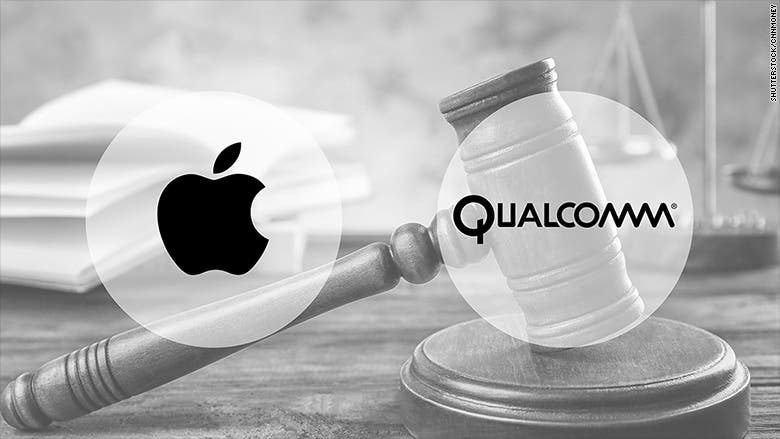The never-ending legal battle between Qualcomm and Apple is becoming more direct with both companies accusing each other of one crime or another. Today, Apple and Qualcomm’s latest patent litigation kicked off in San Diego. Apple claimed that a Qualcomm patent involved in this case was based on an idea shared by Apple engineers and was patented by Qualcomm. U.S. Patent No. 8,838,949 (No. 949), which is incorporated herein by reference in its entirety became a topic discussed by Apple and Qualcomm in their respective court statements.

Among Qualcomm’s three patent infringement allegations against Apple, the 949 patent details a “flashless boot” method that integrates a wireless modem without adding the memory required by the smartphone. Specifically, the technology enables the host processor to transfer system images to the co-processor’s memory through the split loader, enabling the processor to boot without autonomous non-volatile memory.
On the iPhone, the 949 patent allows Apple to avoid installing non-volatile memory for both the A-series processors and their paired wireless modem processors. This not only improves the efficiency of the system performance but also expands the internal space of the mobile phone and reduces the material cost of the mobile phone.
However, the American phone maker said the idea was proposed by a former company engineer, Arjuna Siva. Shiva and Qualcomm engineers discussed the technology in an email communication. “This patent is really the most outrageous allegation in this case,” said Apple chief lawyer Juanita Brooks. “They stole our ideas and went to the patent office to apply for a patent.”
In addition to the 949 patent, Qualcomm also accused Apple of infringing its patents No. 9,535,490 and No. 8,633,936. These two patents related to “power saving technology of computing devices” and “programmable stream processors supporting mixed precision instruction execution”.
In the opening statement on Monday, Qualcomm prepared a purely technical language and concept for jurors that is likely to be difficult to understand. In previous lawsuits, Qualcomm intended to describe the company as a technology inventor, owner, and licensor supporting products such as the iPhone. “Qualcomm, although it doesn’t produce smart phones, doesn’t have the products you and I will buy, but it has developed a lot of smart machine technology,” said Qualcomm’s chief lawyer David Nelson.
The San Diego case is the first lawsuit between both companies to be tried by a US jury. Previously, the lawsuits of both parties were closed in China and Germany, and the iPhone was limitedly banned, but Apple has found a workaround to avoid the lock-up order through software updates. The future decision of the US International Trade Commission (ITC) may threaten the iPhone’s sales in the United States, but Apple once again believes that the company has found a software workaround to avoid infringing Qualcomm patents.
Apple sued Qualcomm for the first time in 2017, accusing Qualcomm of abusing its “monopoly power” in the wireless modem field, charging excessive royalties and forcing buyers to obtain its patent license. Subsequently, Qualcomm filed a counterclaim. In the end, the lawsuits of both parties seem to be expanding at the dawn of each new day.





